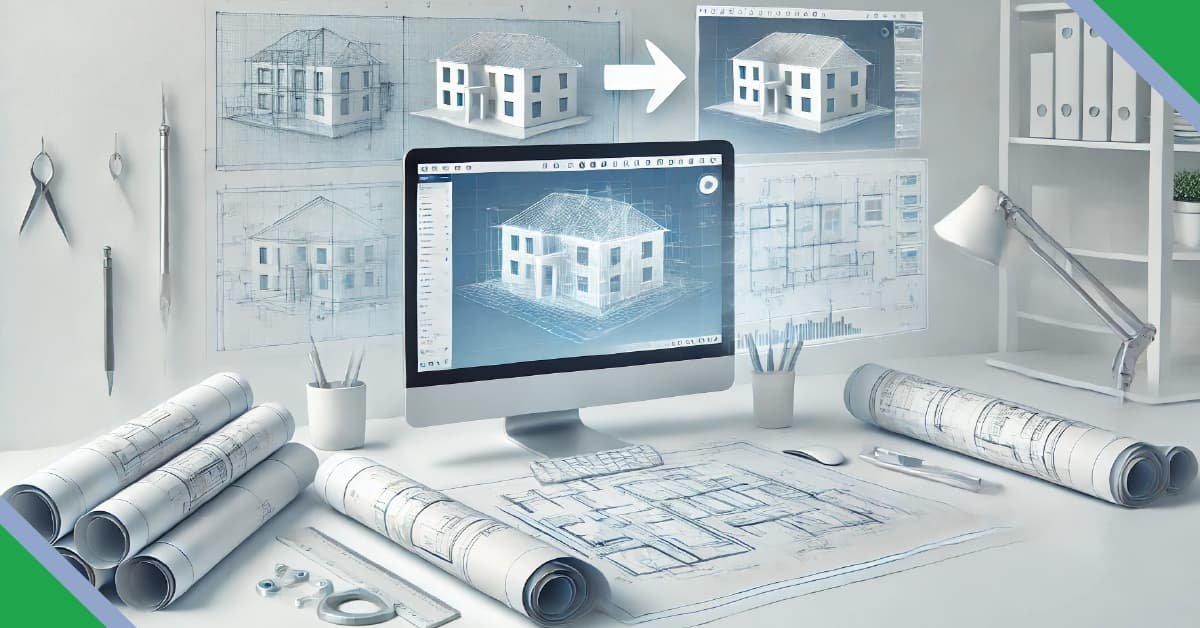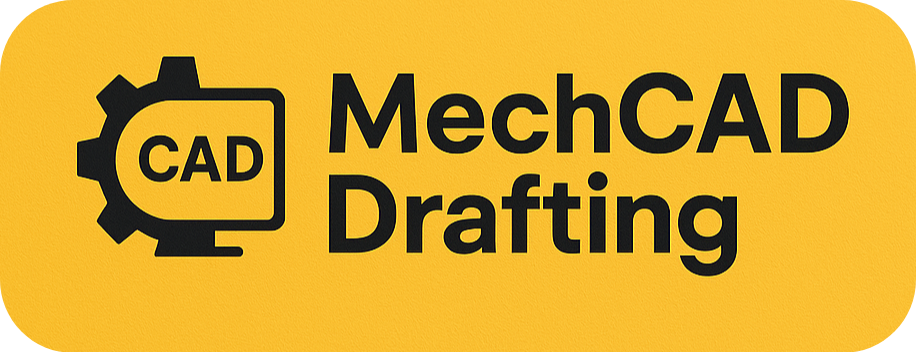Why CAD Conversion Services Are Essential for Modern Engineering

In today’s fast-paced engineering landscape, precision, efficiency, and adaptability are non-negotiable. As industries evolve and technology becomes increasingly sophisticated, the demand for accurate digital representations of physical and legacy designs is greater than ever. This is where CAD conversion services become indispensable.
By converting old blueprints, sketches, and outdated file formats into accurate, editable digital models, engineering teams can streamline operations, reduce costs, and future-proof their designs. This blog explores the crucial role of CAD conversion services in modern engineering and why they’re no longer a luxury—but a necessity.
Chapter 1: Understanding the Basics
CAD conversion services involve transforming traditional hand-drawn designs or outdated file types into precise, computer-aided design (CAD) formats. These digital files can be easily edited, shared, archived, and integrated with modern design and simulation tools.
These services typically include:
- Paper to CAD (digitizing blueprints or sketches)
- Raster to vector conversion (for scanned documents)
- 2D to 3D model conversion
- Format migration (e.g., DWG to DGN, or DXF to STEP)
- Legacy system integration
The resulting files are compatible with various modern CAD platforms, including AutoCAD, SolidWorks, Revit, CATIA, and more.
Chapter 2: Why Traditional Drawings Fall Short
Although many industries still store decades’ worth of physical design documents, relying on paper or outdated digital formats poses several risks:
- Deterioration: Paper drawings fade, tear, or become unreadable over time.
- Inaccuracy: Manual measurements and drafting may contain errors.
- Limited Access: Physical documents are not easily shareable or editable.
- Storage Challenges: Large archives consume space and are hard to manage.
- Lack of Compatibility: Older file formats may not be supported by modern tools.
CAD conversion services solve these problems by ensuring that all critical information is preserved, standardized, and future-ready.
Chapter 3: Benefits for Engineers and Designers
In modern engineering, time and precision are everything. CAD conversion services offer engineers several benefits that directly impact productivity and project outcomes.
1. Enhanced Accuracy
Digitized designs are highly accurate. Errors in hand-drawn sketches or low-resolution scans can be corrected during conversion. Vector files allow for precise measurements and scaling.
2. Better Collaboration
CAD files can be shared across teams and geographies instantly. They can also be updated in real-time, making collaboration seamless between engineers, architects, clients, and contractors.
3. Time and Cost Savings
Manual redrafting or re-creating designs from scratch takes time and costs money. CAD conversion services drastically reduce both, freeing up resources for more valuable work.
4. Streamlined Workflow
Having all designs in editable formats helps integrate them with simulation tools, analysis software, and manufacturing workflows. This creates an efficient, end-to-end engineering process.
5. Data Preservation
CAD conversion services help preserve legacy data. Old files are converted into durable formats that won’t become obsolete, securing years of intellectual property.
Chapter 4: Industry Applications
Almost every sector of engineering benefits from CAD conversion services. Here are some examples:
– Mechanical Engineering
In product design and development, having accurate CAD models is critical for simulation, prototyping, and manufacturing. Legacy parts or assemblies can be reverse-engineered and digitized for new applications.
– Civil Engineering
Old infrastructure drawings can be digitized and updated, making them easier to modify and integrate into modern construction projects.
– Architecture
Architectural firms use CAD conversion to modernize old blueprints and enhance them for today’s BIM (Building Information Modeling) tools.
– Electrical Engineering
Schematic diagrams for circuits, wiring layouts, and control panels are converted into accurate, editable CAD drawings to ensure compliance and efficiency.
– Aerospace and Defense
In highly regulated industries, CAD conversion services ensure that all legacy components and documentation meet strict quality and compatibility standards.
Chapter 5: Common CAD Conversion Techniques
Several techniques and technologies are used in CAD conversion services. Understanding them helps ensure you choose the right method for your project.
1. Manual Redrafting
This involves tracing over a scanned document in a CAD program. It’s labor-intensive but provides high accuracy when automated tools can’t interpret the data correctly.
2. Auto Vectorization
Software tools automatically convert raster images into vector formats. While fast, this method may require manual cleanup for best results.
3. 2D to 3D Modeling
Flat drawings are used to create 3D representations, essential for simulation and prototyping.
4. Hybrid Approaches
Often, a mix of automated tools and human expertise is used to balance speed and precision.
Each technique is selected based on the quality of the original drawing, complexity, and desired output format.
Chapter 6: Data Security and Intellectual Property
One of the top concerns when outsourcing CAD conversion services is data protection. Original designs often contain sensitive information or proprietary technology.
Professional providers take these concerns seriously. Security protocols typically include:
- Non-disclosure agreements
- Encrypted data transfer
- Secure storage
- Access control policies
By working with trusted providers, companies can safeguard their intellectual property while still reaping the benefits of outsourced services.
Chapter 7: Choosing the Right CAD Conversion Partner
Not all providers offer the same level of accuracy, speed, or confidentiality. Here’s what to look for when selecting a service:
– Industry Experience
Choose providers who understand the technical requirements of your sector. Experience in architecture may not translate to mechanical engineering needs.
– Software Compatibility
Make sure the output formats are compatible with your in-house tools.
– Quality Control
Ask about their review process. Double-checking conversions is essential to eliminate errors.
– Turnaround Time
Timely delivery can be a deciding factor, especially for ongoing projects.
– Customer Support
Good communication ensures your specifications are clearly understood and met.
A reliable partner becomes an extension of your engineering team.
Chapter 8: Real-World Case Studies
Let’s explore a few examples of how CAD conversion services have made a difference.
Case 1: Automotive Component Manufacturer
A company had thousands of paper-based designs for parts created in the 1980s and 90s. CAD conversion services helped digitize them into 3D CAD models. This allowed the firm to update designs for modern manufacturing and reduce part production errors by 25%.
Case 2: Historic Building Renovation
An architectural team tasked with restoring a 100-year-old building used CAD conversion services to transform hand-drawn floor plans into BIM-ready files. This helped them coordinate renovation efforts without damaging the original structure.
Case 3: Oil & Gas Engineering
In the energy sector, a firm converted legacy P&ID diagrams into smart CAD files. This made it easier to upgrade pipelines and comply with modern safety regulations, saving both time and compliance costs.
Chapter 9: Integration with Modern Technologies
The true power of CAD conversion services comes when integrated with emerging engineering technologies:
– 3D Printing
CAD models serve as the foundation for rapid prototyping and additive manufacturing.
– Simulation and Analysis
Finite Element Analysis (FEA) and Computational Fluid Dynamics (CFD) tools require accurate CAD input for reliable results.
– Digital Twins
Digital representations of real-world systems rely on precise 3D models, often created via CAD conversion from original drawings.
– Augmented Reality (AR)
Interactive, real-time design visualization in AR is only possible with high-quality CAD data.
Incorporating conversion services into these workflows accelerates innovation and minimizes rework.
Chapter 10: Future Outlook
As engineering disciplines continue to advance, the importance of CAD conversion services will only grow. Trends shaping the future include:
- Increased automation using AI-driven tools for faster, more accurate conversion
- Better OCR (optical character recognition) for interpreting scanned documents
- Cloud-based collaboration for real-time CAD editing and sharing
- Integration with PLM (Product Lifecycle Management) systems
These trends highlight the need for digitization not just as a short-term solution, but as a long-term strategy.
Conclusion
Modern engineering depends on speed, accuracy, and digital readiness. Whether you’re designing a new skyscraper, optimizing a vehicle component, or upgrading legacy systems, CAD conversion services are the bridge between old and new.
They reduce costs, eliminate inefficiencies, and enhance collaboration. Most importantly, they preserve valuable design data while preparing it for tomorrow’s technology.
If you haven’t yet embraced this powerful toolset, now is the time. Whether you’re an engineer, project manager, or decision-maker, integrating CAD conversion services into your workflow will give you a competitive edge in today’s digital-driven world.
